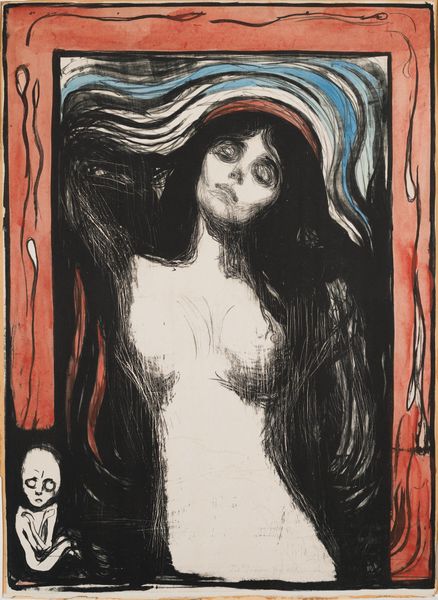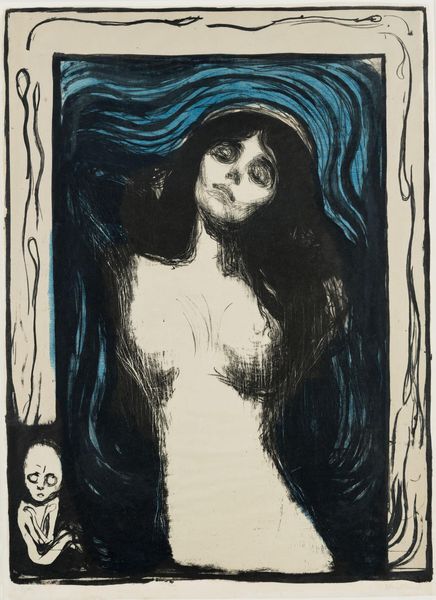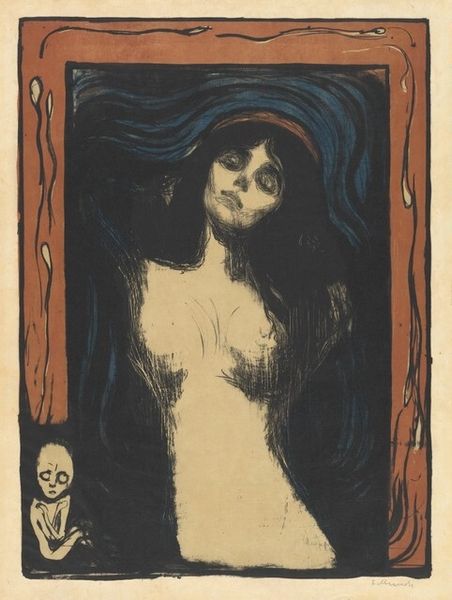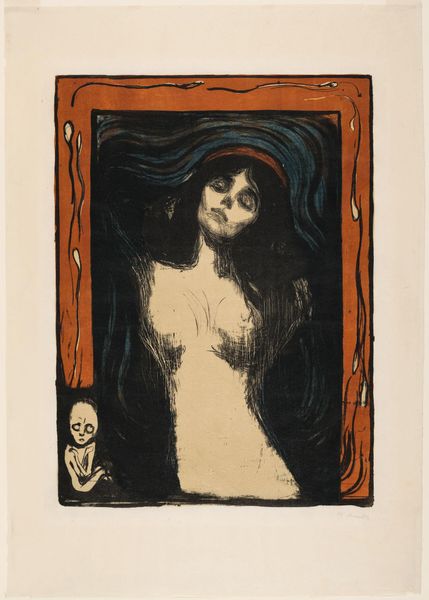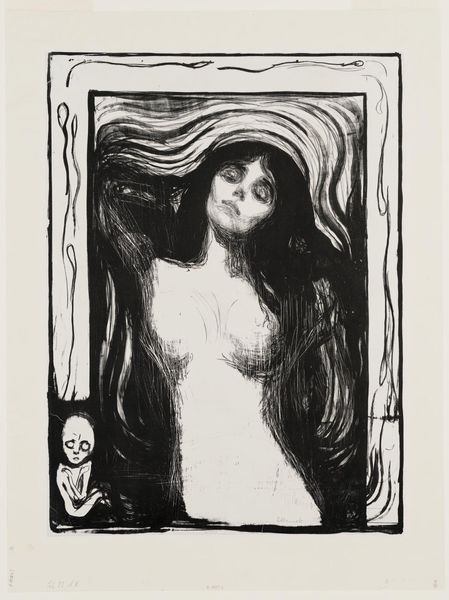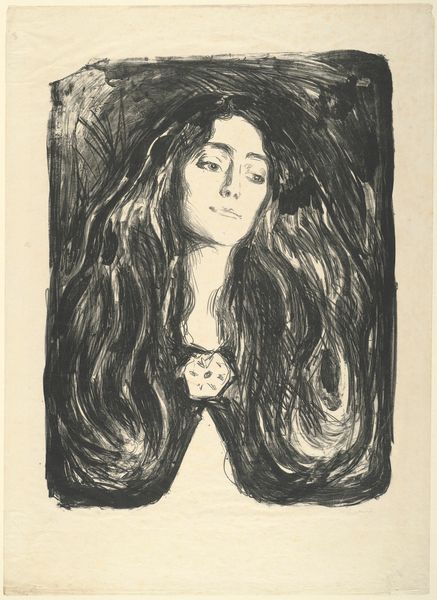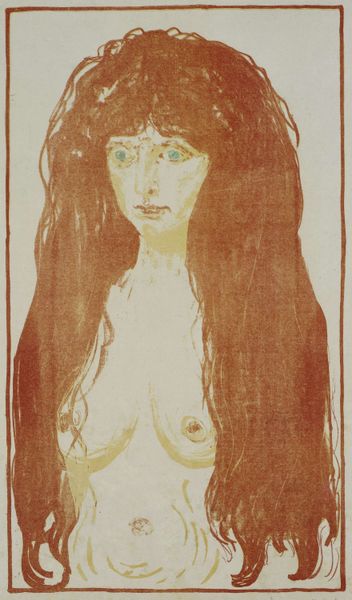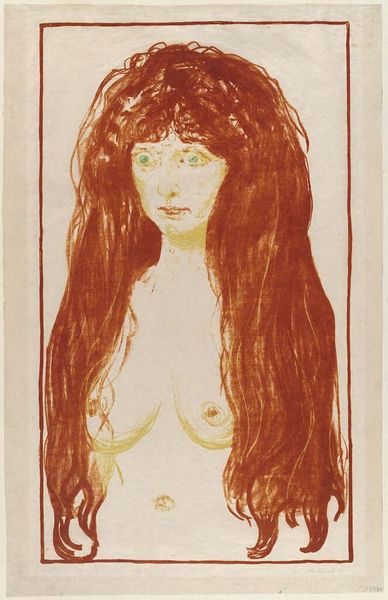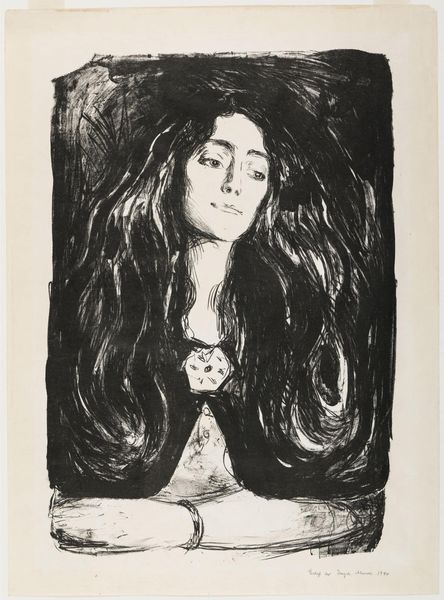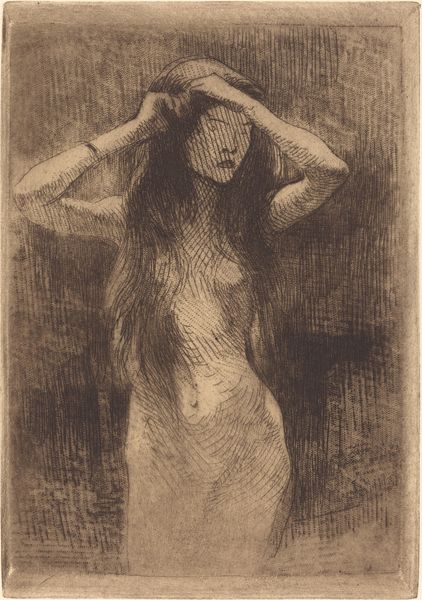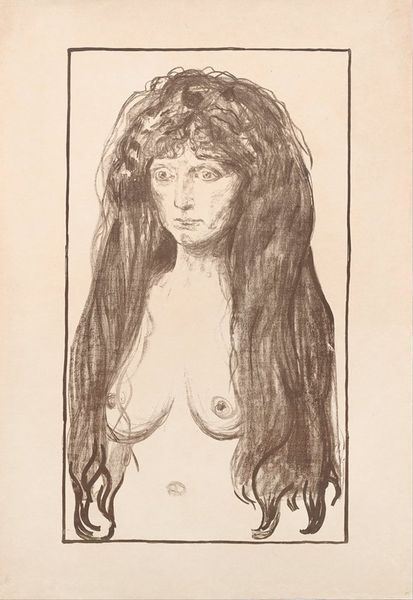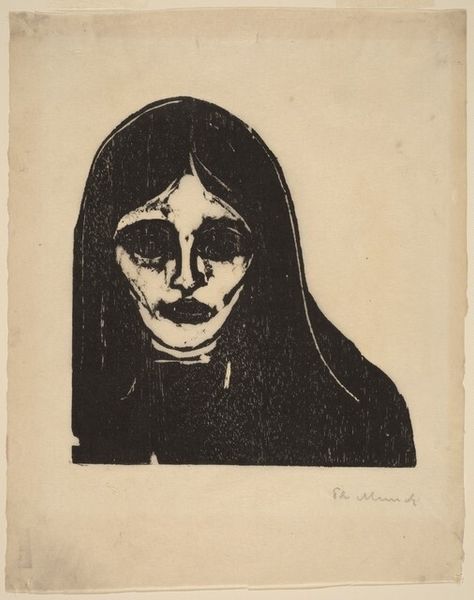
tempera, lithograph, print, intaglio
#
portrait
#
figurative
#
tempera
#
lithograph
# print
#
intaglio
#
expressionism
#
symbolism
#
portrait drawing
#
nude
#
portrait art
Copyright: Public Domain: Artvee
Edvard Munch created this print, called Madonna, using lithography. It's a process involving a stone or metal plate, grease, and acid, to create a surface that will accept ink and then transfer it to paper. Look closely, and you can see the rich, velvety blacks that are typical of this medium. The image is built up from many layers of ink, giving it a sense of depth and texture. These lithographic marks give the artwork a distinctive appearance that contrasts with the smoothness of traditional painting. Lithography allowed for the relatively easy reproduction of images. This was important to Munch, who wanted his art to be accessible to a wider audience, outside the elite circles of the art world. It allowed for the possibility of art as a commodity, reflecting shifts in the art market during the late 19th and early 20th centuries. Munch’s choice of lithography speaks to his vision of art as a means of communication, deeply entwined with social change. In considering his materials, making, and context, we can appreciate the full significance of the artwork.
Comments
No comments
Be the first to comment and join the conversation on the ultimate creative platform.
